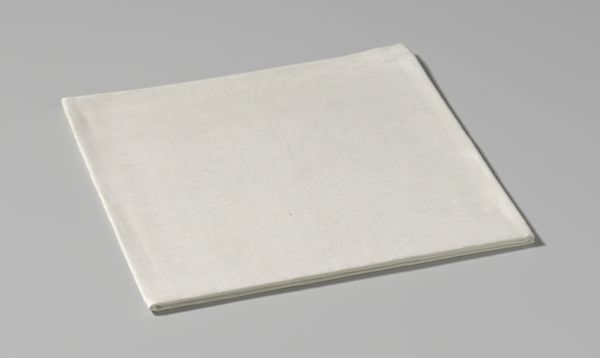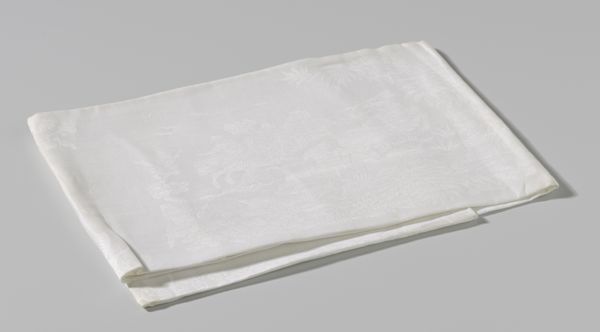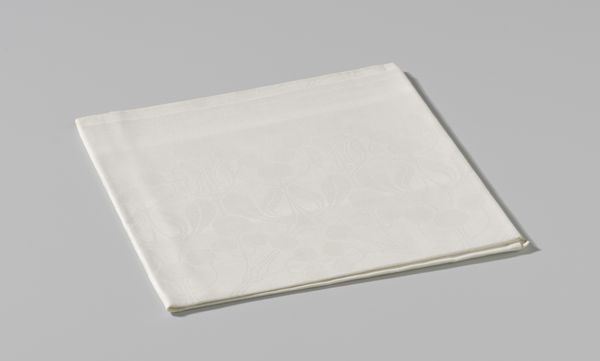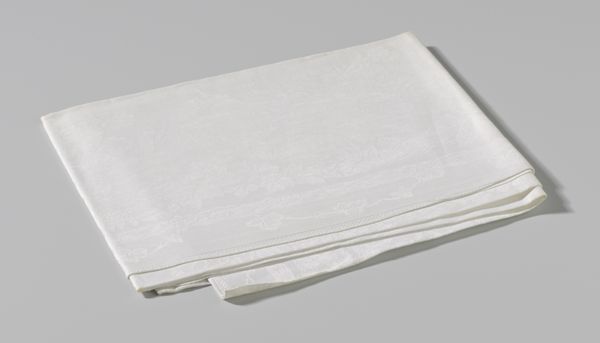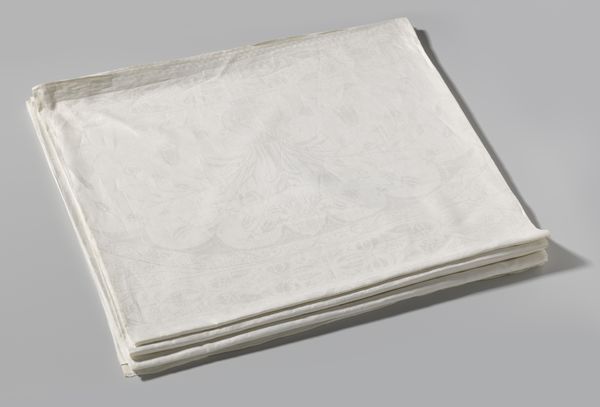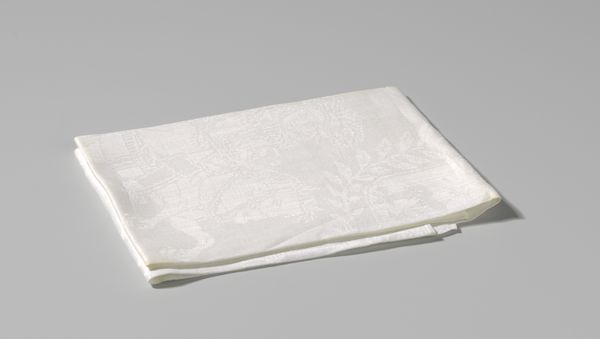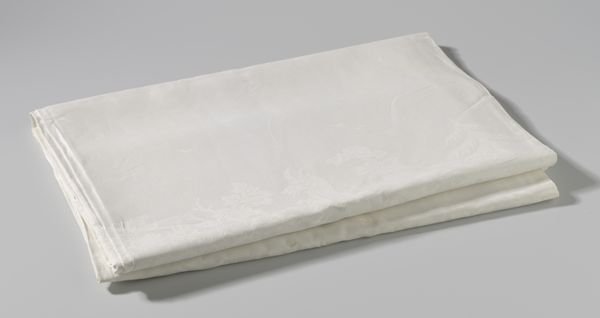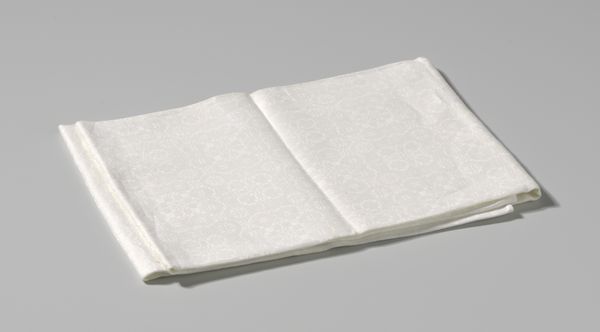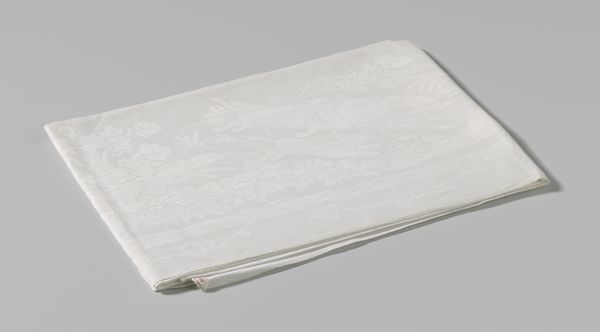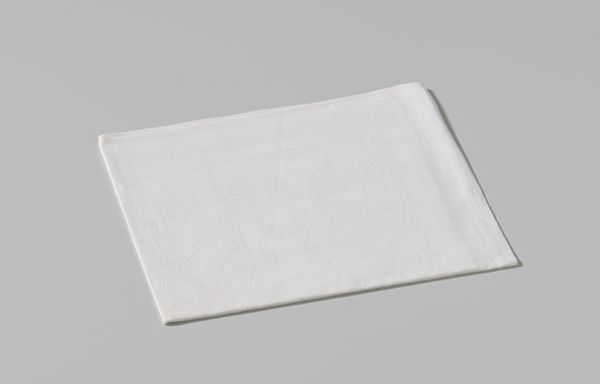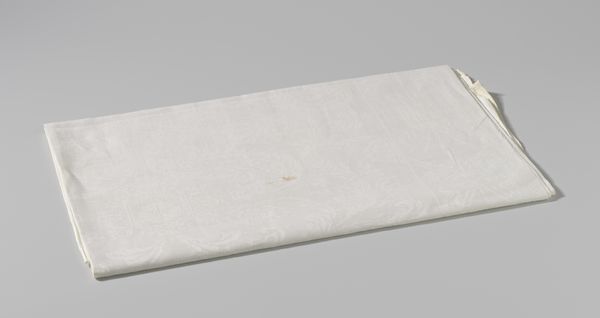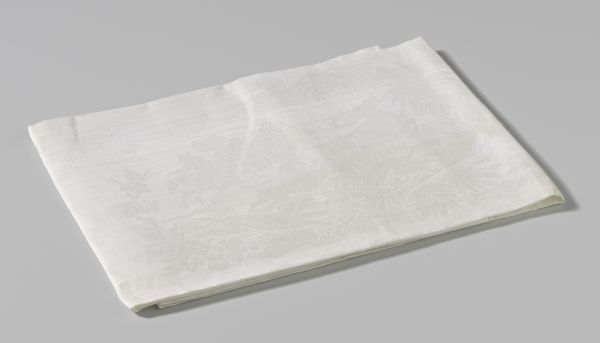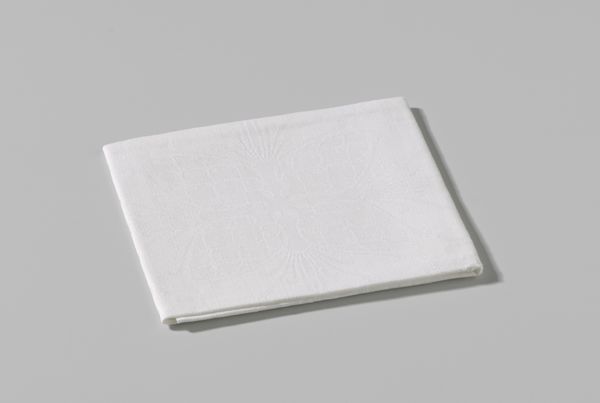
Tafellaken van linnendamast motief Naaldenveld, dessin 607 c. 1900 - 1925
0:00
0:00
chrislebeau
Rijksmuseum
weaving, textile
#
light coloured
#
weaving
#
textile
Dimensions: length 250 cm, width 176 cm
Copyright: Rijks Museum: Open Domain
Curator: Here we have a linen damask tablecloth by Chris Lebeau, titled "Tafellaken van linnendamast motief Naaldenveld, dessin 607", dating from around 1900-1925. Editor: My first impression is one of understated elegance. The subtle variations in the weave create a sense of movement despite its stillness. It’s remarkable how the pattern emerges and recedes depending on the light. Curator: Exactly. The very structure of the linen, the warp and weft, determine the visual effect. Lebeau is manipulating the material itself to create depth and texture. It's an excellent example of form dictating content, a key element of formalist art. Editor: I'm drawn to what that subtle patterning might symbolize. A "Naaldenveld," or needle field—is this perhaps referencing a field of reeds or perhaps even abstracted, stylized coniferous trees? It seems to connect domestic life to the natural world in a very particular, stylized way, doesn't it? Curator: I see your point about the connection to nature, but I'm hesitant to leap to a symbolic interpretation. Could it be that Lebeau was more concerned with the inherent qualities of the repeated pattern, the interplay of light and shadow, and the way the design interacts with the rectangular format of the cloth itself? Editor: I understand that perspective, but for viewers in that era, wouldn’t such a highly stylized design carry connotations beyond its purely formal qualities? The choice to depict this "needle field" suggests an interest in a specific kind of environment. I mean, imagine the stories told, the conversations held, above such a cloth. The imagery subtly inflects even unspoken rituals around dining, no? Curator: It is difficult to deny the historical and social context in which Lebeau created this tablecloth. He may be reflecting a longing for nature that permeates the urban experience of that era, expressed via the repeating, simplified form. The subtle visual contrasts function both aesthetically and evoke those feelings, giving it a very self-contained presence. Editor: Indeed. Ultimately, whether we read this piece through the lens of formalist analysis or iconographic interpretation, it serves as an excellent demonstration of beauty in functional design. Curator: Agreed. It prompts us to contemplate the significance we project onto even the most practical and domestic objects.
Comments
No comments
Be the first to comment and join the conversation on the ultimate creative platform.
